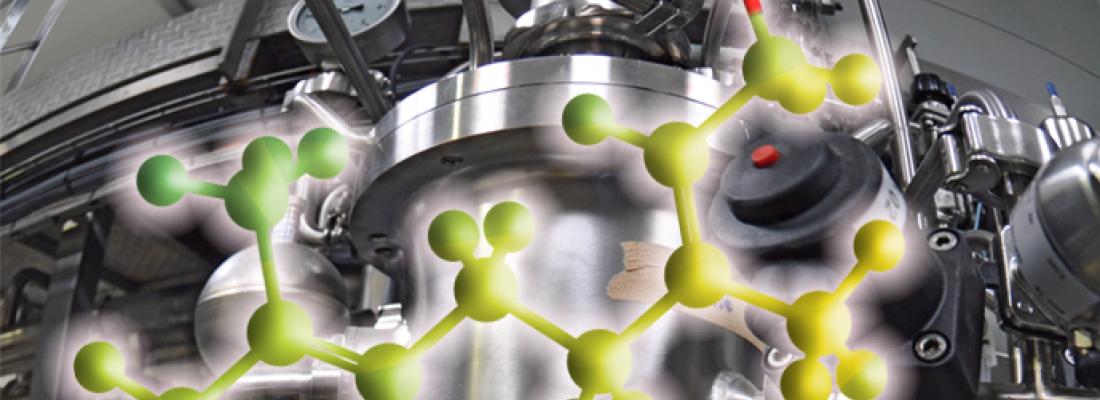Bioeconomy Reading time 5 min
The 3BCAR Carnot Institute is driving the funding of research in the field of bio-electrochemistry
Published on 12 March 2018

Electrochemistry is a science that studies transformations of matter at an atomic scale that are induced by the movement of electronic charges. Within 3BCAR, we are working on processes or procedures that utilise these electrochemical phenomena, such as oxidation-reduction, induction reactors or charged membranes, etc. More recently, a review of all these phenomena in the context of biological systems and biotechnologies gave rise to bio-electrochemistry, which combines both biotic and abiotic mechanisms. Novel applications are now becoming available, such as investigative tools to study biofilms, characterisation tools (biosensors) or breakthrough processes such as bio-electrosynthesis.
We present below several areas of electrochemistry being explored and valorised by the 3BCAR Carnot Institute.
Innovative mechanisms to ensure the oxidative degradation of lignocellulose to produce functionalised materials (the Lignoxyl 2.0 project)
Reactive oxygen species (ROS) are radical species involved in the natural processes of lignocellulose degradation. These radicals display considerable oxidative capacity involving the redox phenomena employed by nature to break down lignin and cellulose. Their reactivity also means that they constitute interesting catalysts to create functionalised entities derived from biomolecules (phenolic acids, lignins). 3BCAR is providing financial support for work to understand and control the redox processes implicated in producing new nanocellulose materials functionalised by lignin or its derivatives. These assemblies with high added value and adjustable properties could find applications in the fields of composite materials and surface coatings. Different production pathways for these nanomaterials are currently under study: a chemical pathway by means of Fenton’s reaction, or a biological pathway using light-activated enzymes.
A hydrothermal electrochemical reactor for innovative processes in green chemistry
Hydrothermal reactors utilise the mechanism of heating by thermal induction. The presence of conducting electrolytes within a reaction medium subjected to lines of electromagnetic fields ensures the circulation of electrons within the medium. This technology enables the direct generation of heat within the system through the transformation of electrical energy into thermal energy via the Joule effect. It ensures highly homogeneous heating of the medium and limits thermal losses. This reactor also has the advantage of intensifying the reactions while operating under gentle conditions. This eco-process has already been used for the extraction of essential oils and to enhance the chemical reactivity of oils and derivatives. A new project, funded by 3BCAR, is now exploring the possibility of using this technology to extract molecules of interest.
Bio-electrochemistry applied to biofilms and waste recycling
The control of biofilm formation is a major challenge that must be overcome in order to improve numerous industrial processes: waste treatment, food production, etc. Different laboratories within 3BCAR are studying the organisation of micro-organisms in the form of biofilms in fermentation media, and seeking to determine how these biofilms could be used advantageously if they were loaded with electrically receptive micro-organisms.
Electrobiochemical processes are also being exploited using an entirely new technology called microbial electrosynthesis (the Biorare project). Biorare has demonstrated that this electrosynthetic technology, which is currently at the TRL1 stage, could be deployed at TRL4 and applied to the production of platform molecules for green chemistry by recycling biological waste. After five years of work, the partners in this project (IRSTEA, CNRS, SUEZ and INRA) have managed to develop a pilot that resembles a battery. The first compartment, fed with a biowaste hydrolysate, contains an anode on which is placed a mixture of fermentative and electroactive micro-organisms. The other compartment comprises a biocathode associated with electrophobic micro-organisms and is fed with CO2. When an electrical current is applied, the cathode micro-organisms are able to produce molecules of interest (carboxylic acids, alcohols).

The Carnot 3BCAR, labeled Carnot by French government since 2011 and lead by INRAE and its partners, is a French structured network offering competencies in the field of valorization of biomass, bioenergy, biobased molecules and biobased materials.
